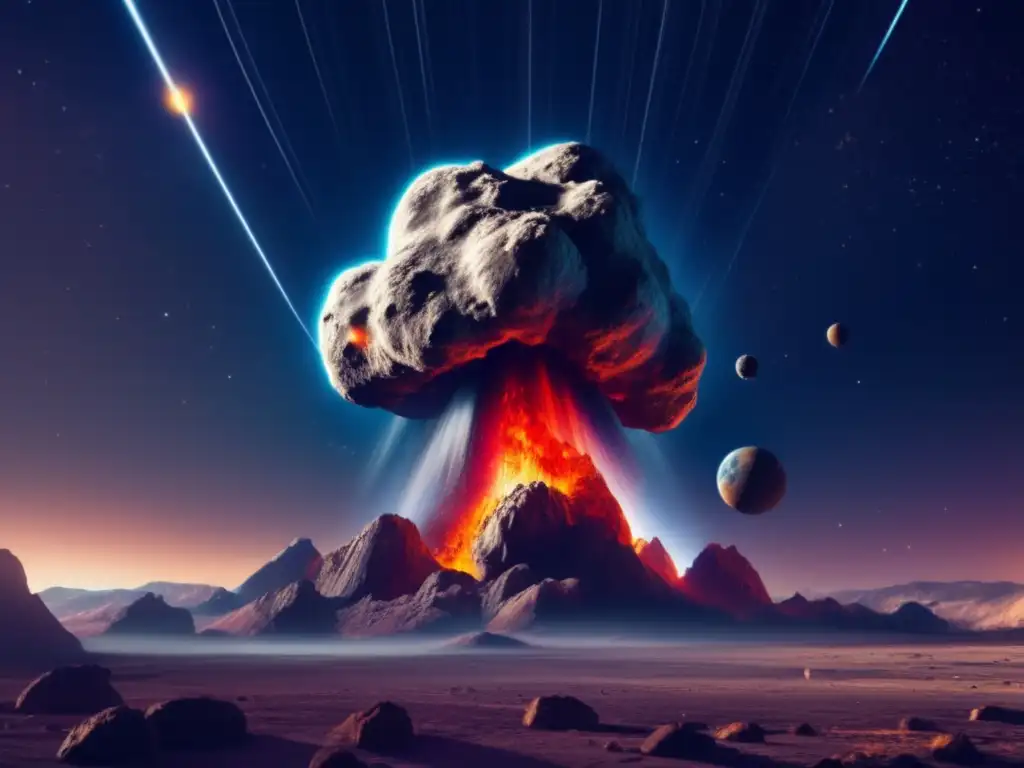Asteroid (29075) 1950 DA: A Risky Future For Earth?

Introduction
Asteroids have fascinated humanity for centuries, representing both threats and opportunities. One asteroid that has caught the attention of scientists and astronomers is (29075) 1950 DA. This asteroid poses potential risks to Earth in the future, making it a topic of great interest and concern. In this article, we will explore the characteristics of (29075) 1950 DA, its trajectory, and the potential impact it could have on our planet.
The Discovery of Asteroid (29075) 1950 DA

Discovery and Naming
(29075) 1950 DA was discovered on February 23, 1950, by Carl A. Wirtanen at the Lick Observatory in California. It belongs to the Apollo group, a class of asteroids that cross Earth's orbit. The asteroid was named "1950 DA" according to the naming conventions at the time.
Physical Characteristics
(29075) 1950 DA has a diameter of approximately 1.1 kilometers (0.68 miles). It has a relatively fast rotation period of just under 2 hours and 7 minutes. The asteroid's composition is still uncertain, but it is believed to be a stony or carbonaceous type.
Orbital Parameters
The orbit of (29075) 1950 DA is intriguing and raises concerns about its potential impact on Earth. It follows an elliptical path around the Sun and crosses Earth's orbit every 21.8 years. The asteroid's closest approach to Earth occurred in the year of its discovery, 1950, at a distance of approximately 0.052 astronomical units (7.8 million kilometers or 4.8 million miles).
Potential Earth Impact

Risk Assessment
Scientists have been studying the trajectory of (29075) 1950 DA to assess the potential risk of an impact with Earth. The asteroid is included in the Torino Scale, which measures the impact hazard associated with near-Earth objects. Initially, it was assigned a Torino Scale rating of 0, indicating no significant risk. However, subsequent studies and refinements in calculations have raised concerns, leading to an upgrade to a level 1 in 2002.
Predicted Close Approach in 2880
The most concerning aspect of (29075) 1950 DA is its predicted close approach to Earth in the year 2880. Based on its orbital parameters and gravitational interactions, there is a small but non-negligible chance of impact. According to current calculations, the probability of a collision is estimated at around 1 in 8,300, meaning there is a 0.012% chance that it will strike our planet.
Potential Consequences
If (29075) 1950 DA were to collide with Earth, the consequences would be significant. Due to its size, approximately the impact energy equivalent to 44,800 megatons of TNT would be released, causing widespread devastation. The exact location and severity of the impact would depend on various factors such as entry angle, speed, and composition of the asteroid.
Mitigation Efforts and Further Studies

Scientific Endeavors
Scientists and astronomers continue to monitor (29075) 1950 DA and other potentially hazardous asteroids. Ongoing observations help refine the understanding of its orbit and potential impact risks. Additional studies are being conducted to gather more accurate data on its composition, internal structure, and potential mitigation strategies.
Potential Mitigation Techniques
Given the potential risks associated with (29075) 1950 DA, scientists have discussed various mitigation techniques. These include technologies such as kinetic impactors, gravity tractors, and even the possibility of using nuclear explosives as a last resort. The aim is to deflect or destroy the asteroid before it poses a danger to Earth.
International Cooperation
The threat posed by near-Earth asteroids has sparked international cooperation among space agencies and scientific organizations. Collaborative projects such as the Near-Earth Object Observations program and the Asteroid Impact and Deflection Assessment are dedicated to studying, tracking, and developing strategies for mitigating potential asteroid impacts.
Frequently Asked Questions

-
What is (29075) 1950 DA?
(29075) 1950 DA is an asteroid that crosses Earth's orbit and has the potential for a future impact.
-
When was (29075) 1950 DA discovered?
(29075) 1950 DA was discovered on February 23, 1950.
-
What is the risk of (29075) 1950 DA colliding with Earth?
The probability of (29075) 1950 DA colliding with Earth is currently estimated at around 1 in 8,300.
-
What are the potential consequences of an impact?
If (29075) 1950 DA were to collide with Earth, it could cause significant devastation, releasing energy equivalent to 44,800 megatons of TNT.
-
What are scientists doing to mitigate the risk?
Scientists are conducting ongoing observations and studies to gather more data on (29075) 1950 DA, as well as discussing mitigation techniques such as kinetic impactors and gravity tractors.
Conclusion
(29075) 1950 DA represents a potential future risk for Earth. While the chances of a collision are relatively small, the consequences would be significant. Scientists and space agencies are actively studying this asteroid and others like it to better understand their trajectories and develop strategies for mitigating potential impacts. Continued international cooperation and research are crucial in safeguarding our planet from the risks posed by near-Earth asteroids.
Thank you for taking the time to explore the potential risks associated with (29075) 1950 DA. We encourage you to share your thoughts and engage with www.asteroidrealm.com by subscribing, sharing this article on social networks, or participating in the comments section below.
Additional Resources

For more information on asteroids and potential impact risks, please refer to the following resources:
- NASA's Near-Earth Object Program: www.nasa.gov/planetarydefense
- The International Astronomical Union's Minor Planet Center: www.minorplanetcenter.net
- The Planetary Society's Asteroid Initiative: www.planetary.org/asteroids
 Ryugu: The Target Of Japan's Hayabusa2 Mission
Ryugu: The Target Of Japan's Hayabusa2 Mission Steins: A Diamond In The Sky
Steins: A Diamond In The Sky Lutetia: A Remnant From The Birth Of Earth
Lutetia: A Remnant From The Birth Of EarthIf you want to discover more articles similar to Asteroid (29075) 1950 DA: A Risky Future For Earth?, you can visit the Asteroid Profiles category.
Leave a Reply

Articulos relacionados: